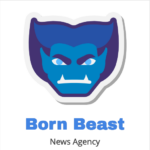Recognizing the Typical Facebook Banner Size
Understanding Facebook’s suggested banner size is the first step in choosing the best one. According to the most recent recommendations, a Facebook cover photo should be 312 pixels height and 820 pixels wide for desktop viewing. However, the viewable area changes to 640 pixels wide by 360 pixels height on mobile devices.
Because a design that seems flawless on a desktop computer may appear cropped or misaligned on a mobile device, this aspect ratio discrepancy is crucial. Your design has to support both perspectives because a large percentage of Facebook users access the site on mobile devices. The ideal strategy is to put your most crucial components—such as text, logos, and significant images—in the “safe zone,” which is usually the middle section of the banner where desktop and mobile views overlap.
The Significance of Banner Size
Your brand or personality is visually introduced by your Facebook banner. Your first impression might be ruined by a banner that is too small. Selecting the appropriate size is essential for the following reasons:
1. A polished appearance
A banner that is improperly cropped, pixelated, or fuzzy appears amateurish. Clarity and sharpness are guaranteed when you adhere to Facebook’s suggested sizes.
2. A seamless user experience
Parts of the banner are shown differently on different devices. A well-designed cover photo guarantees that viewers will always see a unified and attractive image whether they are viewing your website on a desktop or mobile device.
3. Powerful Branding
You may emphasize key branding components, such as your logo, tagline, or promotional message, with the ideal banner size without worrying about distortion or cutting.
How to Create a Successful Facebook Banner
Selecting the appropriate size is only one step in the procedure. Take note of the following design advice to produce an effective banner:
1. Make Use of High-Resolution Photos
Stretching low-quality photos to match the banner’s size causes them to appear pixelated. Use high-resolution images or graphics that are at least as large as the suggested pixel size.
2. Maintain the Center of Important Elements
Keep the most important material in the core 640×312 pixel region of banners since desktop and mobile devices show them differently. This guarantees uniformity on all displays.
3. Continue to Use Clean and Simple Designs
Banner clutter overwhelms viewers. Adhere to a clear visual hierarchy, simple graphics, and less text. Let your brand’s image do the talking.
4. Select Colors That Go Well Together
The color scheme of your brand should be reflected in your banner. Brand identity is reinforced and a unified appearance is produced by using harmonious colors.
5. Conduct Tests on Various Devices
Examine your banner’s readability and cropping before completing it on a desktop and mobile device.
Common Errors to Steer Clear of
Many customers unintentionally make little errors that have an impact on how their banner looks in the end. Steer clear of these pitfalls:
submitting pictures that are smaller than what is advised
Including too much text on photographs that makes them illegible on mobile devices
Ignoring the safe zone might result in the removal of crucial components.
I neglected to adjust for both bright and dark screen settings.
Conclusion
While selecting the ideal Facebook banner size is not difficult, it does call for careful consideration. You can make sure your banner looks fantastic on all devices by adhering to Facebook’s suggested proportions, which are 820 x 312 pixels for desktop and 640 x 360 pixels for mobile. Maintain a simple, eye-catching design, utilize high-quality photos, and keep important components within the protected zone. Your Facebook cover photo may greatly improve the overall design of your page and give your viewers a powerful, polished impression if you take the proper approach.
